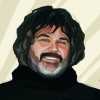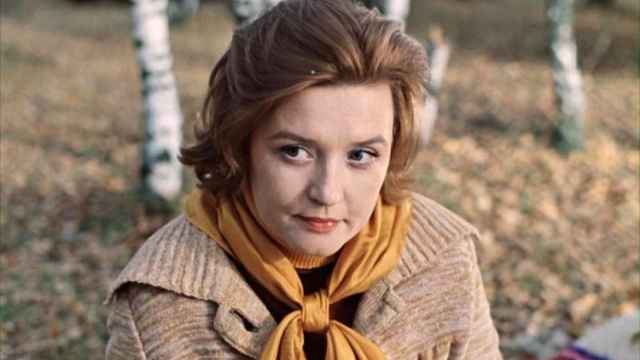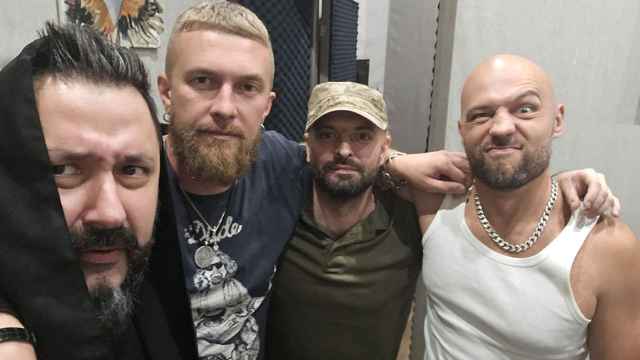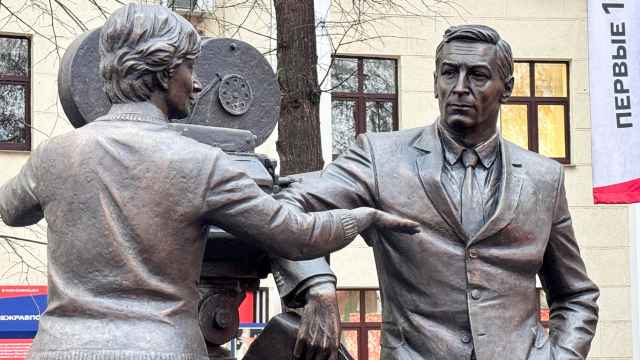One of the buildings in Moscow that I always greet with a nod as I pass is the unusually shaped yellow structure that bears the address of 2 Granatny Pereulok.
Chances are you have seen it if you have ever wandered the area surrounding Maxim Gorky's spectacular art nouveau home at 6/2 Malaya Nikitskaya Ulitsa or the cathedral at 36 Bolshaya Nikitskaya Ulitsa where Alexander Pushkin was married. It is located just after the sharp left turn going north on Ulitsa Spiridonovka where the road forks into two. It's right across the street from the monument to the great poet Alexander Blok, if that helps you find your bearings.
To me the building looks a little like a ship heading out to sea, its snub-nosed bow cutting the "waves" of the two streets "flowing" around it. If New York is your chief point of reference, you might see some resemblance to the famous Flatiron building on 5th Avenue, although that's probably stretching it a bit.
In any case, the Flatiron was built in 1902 while the Nikolai and Mikhail Armyansky family commercial apartment building at 2 Granatny Pereulok was built in 1897.
My interest in this piece of real estate has always come from its connection to the Meyerhold Theater, one of the world's most famous avant-garde theaters in the 1920s and 1930s. More specifically, Nikolai Erdman, the playwright about whom I wrote my first book, moved in here in early 1933 thanks to his close working relationship with Meyerhold.
What should have been a happy time for the writer turned out to be quite short-lived. Having spent less than 10 months in his new abode, Erdman was arrested in October of the same year and exiled to Siberia. It would be another decade and a half before he could return to Moscow legally and, needless to say, it would not be to this apartment.
Some of Erdman's illustrious colleagues continued to call this building home at least for a while. They included the actors Yevgeny Samoilov and Mikhail Tsaryov, the designer Anatoly Arapov and Morits Shlugleit, the managing director of the Meyerhold Theater.
All of the Meyerhold people took possession of newly built apartments on the fourth and fifth floors, which were added to the original structure in 1933. In the photograph above, you can easily see the difference in styles between the original building and the addition made 36 years later.
What I had never known until I ran across a fascinating and comprehensive article by Dmitry Oparin on the website of Bolshoi Gorod magazine is that the Meyerhold connection is only a small part of the cultural history that has unfolded at this address.
One of the building's most interesting residents was the writer Boris Zaitsev, now known less to the average reader but still a highly respected member of the literary community in the early 20th century. Zaitsev moved here with his wife in 1906 at a time when his reputation was still in the making. However, he clearly had caught the ear of the elite, for he was the host of literary evenings that drew many important figures, including the poet Konstantin Balmont, the prose writer and dramatist Fyodor Sologub, the novelist and historian Vikenty Veresayev, the novelist and poet Andrei Bely and the future Nobel prize winner Ivan Bunin.
In 1916, just two years after the young director Alexander Tairov married the young actress Alisa Koonen, the couple took up residence at 2 Granatny Pereulok as renters. They had just founded a small, experimental playhouse called the Kamerny Theater, which, in the 1920s and 1930s, would be among the most influential and popular in Moscow. We can imagine the director and actress packing and unpacking for their move even as they premiered two important productions that year — "The Veil of Pierrette" by Arthur Schnitzler and "Thamyris Kitharodos" by the Russian classicist Innokenty Annensky.
Throughout the years, including the period following a major reconstruction of the building in 1974, this structure has been home to many other important figures — architects, doctors, publishers, Olympic champions and more.
However, aside from a plaque honoring the famous Soviet test pilot Mark Gallai, nothing on this structure reveals to the casual passerby the rich cultural heritage it has borne witness to throughout its 115 years. Just another of the many "nondescript" locations in Moscow that, in truth, are chock full of history and life.
A Message from The Moscow Times:
Dear readers,
We are facing unprecedented challenges. Russia's Prosecutor General's Office has designated The Moscow Times as an "undesirable" organization, criminalizing our work and putting our staff at risk of prosecution. This follows our earlier unjust labeling as a "foreign agent."
These actions are direct attempts to silence independent journalism in Russia. The authorities claim our work "discredits the decisions of the Russian leadership." We see things differently: we strive to provide accurate, unbiased reporting on Russia.
We, the journalists of The Moscow Times, refuse to be silenced. But to continue our work, we need your help.
Your support, no matter how small, makes a world of difference. If you can, please support us monthly starting from just $2. It's quick to set up, and every contribution makes a significant impact.
By supporting The Moscow Times, you're defending open, independent journalism in the face of repression. Thank you for standing with us.
Remind me later.






